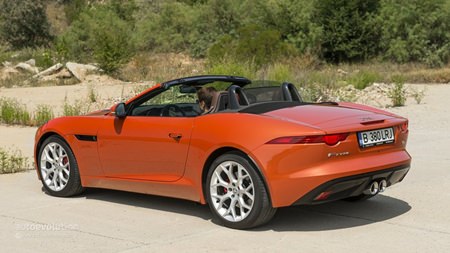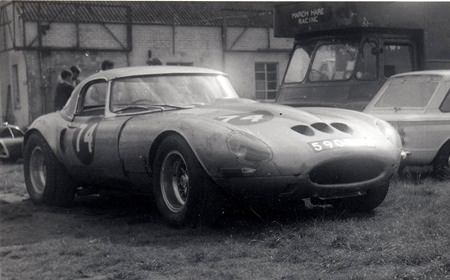There were two Jaguar F-Types on display at the Bira circuit for the 100 year anniversary of Prince Bira. Same color, but one a cabriolet and the other a coupe. The coupe was pleasant enough looking, without being traffic-stopping. But the rag roof was a complete disaster around the rear.
However, Jaguar says that its new F-Type Coupe will double sales of its two-seater sports cars, with the majority of customers being lured away from other premium sports car brands, including Porsche and BMW.
 F-Type cabriolet
F-Type cabriolet
The convertible V8 F-Type in its supercharged form puts out 364 kW and 625 Nm torque, but the top of the line V8 coupe has 404 kW/680 Nm and cutting the zero to 100 acceleration time by a second to 4.2 seconds.
Top speed remains the same at 300 km/h, as do the fuel-consumption and CO2 emissions figures at 11.1 liters per 100 km and 259 g/km respectively (if that is of any interest in a sports car).
Less powerful engines include a 3.0 liter V6 developing 280 kW and 460 Nm torque, which is enough to keep the 0-100 km/h dash below five seconds at 4.9 and on to a top speed of 275 km/h.
 Jaguar Egal
Jaguar Egal
The least powerful engine in the coupe still manages to get to 100 km/h in 5.3 seconds, a top speed of 260 km/h and a consumption of 8.8 liters per 100 km. Both V6 variants have fuel-saving idle-stop.
Convertible versions have a minimal 196 liter boot which shrinks further with the addition of ‘space saving’ spare wheel, but with the coupe, the boot more than doubles to just over 400 liters.
All variants have forged aluminium double-wishbone suspension at all four corners and the electronic stability system measures body movement 100 times per second to keep everything pointing in the right direction.
Selecting the Dynamic mode switch sets the Coupe up for more spirited driving, with sharpened accelerator response, heavier steering and more aggressive gear-changes higher up the rev-range.
If the switchable sport-exhaust option is fitted, the Dynamic mode also automatically selects the loudest setting. However, the more noisy option can be switched on and off at any time with a center console button.
All versions get auto dimming rear-view mirror, rear parking sensors, cruise control with limiter, keyless entry and start, while Bluetooth, Meridian 380W sound system and navigation are all accessed through the eight inch touch-screen.
However, many items you would expect are pay-extra options, including an electric boot-lid, a package including memory for both seats and dimming/folding side mirrors, a package with reversing camera and front parking sensors, a range of carbon-fiber interior and exterior trims, 12 different wheel designs and even a five-piece luggage set tailored to fit perfectly in the boot.
So whilst the new Jaguar F-Type may look good on paper, even if not in the flesh, I cannot see them lifting too many sales from Porsche, for example.
However, it seems impossible for Jaguar to get anywhere near the staggering impression produced by the E-Type when it was released in 1961. In March 2008, the Jaguar E-Type ranked first in a The Daily Telegraph online list of the world’s “100 most beautiful cars” of all time. Even Enzo Ferrari called it “The most beautiful car ever made.”
There was also a very special E-Type fitted with a 7 liter Holman and Moody Ford Galaxie engine, and called the Jaguar Egal. This would have been built around 1962, and I saw this car racing at Silverstone in 1966. The driver would get it half straight in the corner, pull the string and smoke would come out from under the rear guards and it would launch itself through to the next corner. Nothing beats cubic inches!




